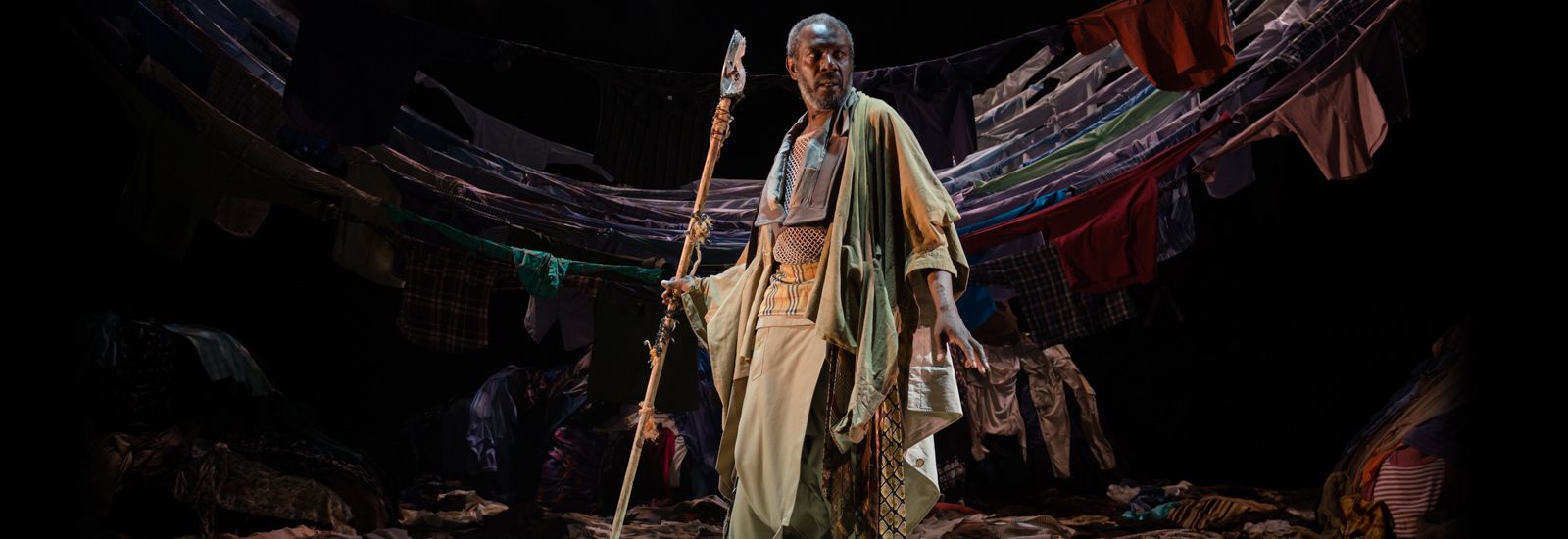
Inspiring culture
Through the display and interpretation of the University’s fascinating and diverse collections, the work of Oxford researchers and academics is able to reach a much wider audience.
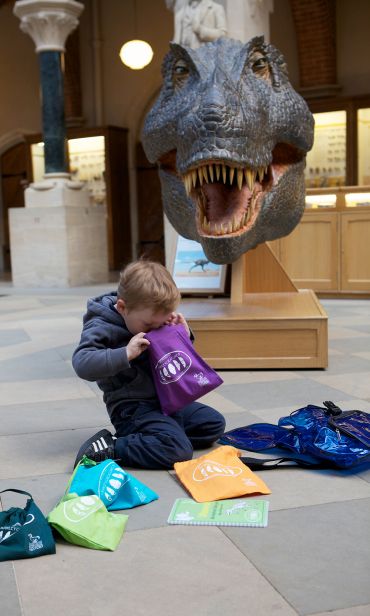 Many people of all ages will be familiar with the dinosaurs at the Museum of Natural History, or perhaps they have seen the unique remains of the dodo as found in the pages of Alice in Wonderland.
Many people of all ages will be familiar with the dinosaurs at the Museum of Natural History, or perhaps they have seen the unique remains of the dodo as found in the pages of Alice in Wonderland.
They may have enjoyed picking up and examining real museum objects at the Pitt Rivers Museum, which holds free handling sessions on Saturday mornings.
Others may have seen Egyptian mummies, Guy Fawkes’ lantern and Japanese paintings of ghosts at the Ashmolean Museum. Or perhaps they have heard about the birth of radio, or learned to navigate by the stars, at the Museum of the History of Science.
The Botanic Garden on the High Street showcases over 5,000 plant species, representing habitats ranging from tropical rainforests to the slopes of the Alps; further afield, in Nuneham Courtney, visitors can go exploring among giant, cathedral-like trees at the Harcourt Arboretum.
The Bate Collection of Musical Instruments gives visitors the opportunity to play something unusual from its handling collection. Where else could you try out a crumhorn, serpent or wailing electronic theremin?
The University is committed to ensuring that its museums and collections are places that spark inspiration, passion and enthusiasm for learning and enjoyment.
Their wonderful displays and exhibitions are brought to life through tours, talks, live performances, film screenings, art and photography classes and exciting after-hours events where visitors can meet friends, enjoy live music and explore the collections in a different light.
Attracting 2.25 million people through their doors each year, the Ashmolean, Museum of the History of Science, Museum of Natural History and Pitt Rivers Museum are some of the most-visited museums in the UK outside London and are among the best university museums in the world.
The Joint Museums Outreach Service
For some, visiting the University’s museums is something they might not consider or might not be possible – so the Joint Museums Outreach Service takes the collections out to them.
It delivers talks, object handling sessions, craft activities and short courses in venues throughout Oxfordshire, ranging from children’s centres and care homes to prisons and refugee centres.
The programme includes supported visits to the museums, where a member of staff familiar from previous sessions will welcome groups and help members enjoy the exhibits. The aim is to help new visitors feel comfortable going into a museum, and give them the confidence to come back and enjoy the fascinating artefacts inside.
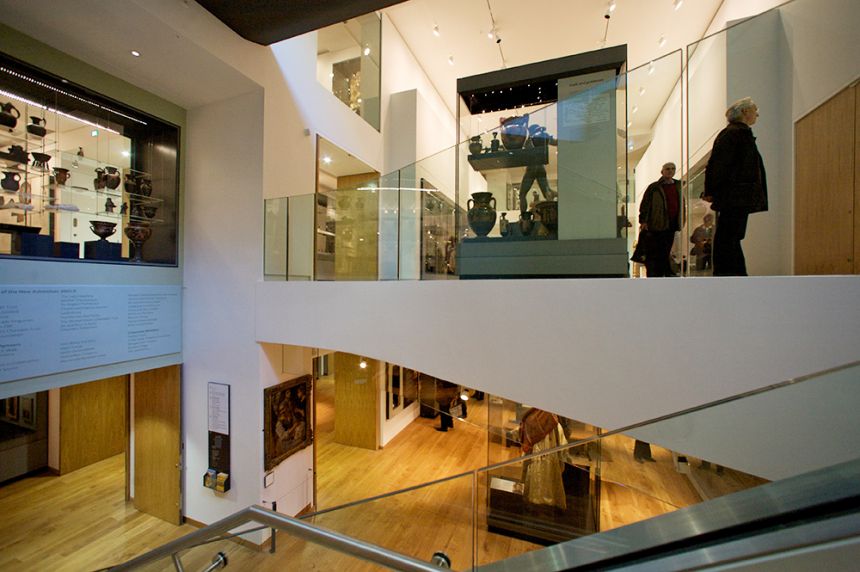
In a recent survey asking participants what they valued from their outreach experiences, respondents said that they appreciated the informal, friendly atmosphere, which helped them to learn better than being in a classroom.
The fun, inspiration and creativity of the sessions made them feel happy and more self-confident – and those bringing in their groups enjoyed it as much as the participants themselves.
Count Me In!
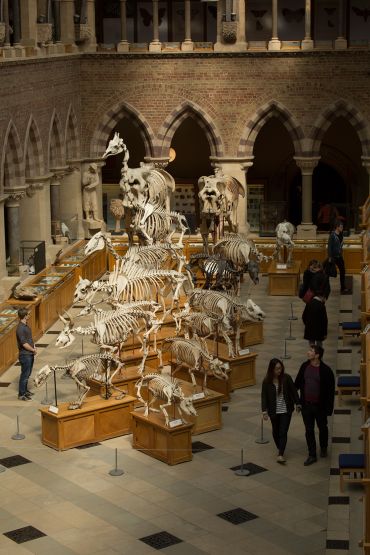 In 2014 the Oxford University Museums Volunteer Service worked with the Museum of Natural History to set up the Count Me In project. Running over a 10-week period, it was aimed at people who would not normally have considered volunteering, and who could gain particular benefit from the training involved.
In 2014 the Oxford University Museums Volunteer Service worked with the Museum of Natural History to set up the Count Me In project. Running over a 10-week period, it was aimed at people who would not normally have considered volunteering, and who could gain particular benefit from the training involved.
Groups that were not well represented among existing volunteers were contacted through job centres, sheltered housing, children’s centres, Oxfordshire Learning Network, MIND, and refugee and probation services.
Part of the training involved taking a customer service course accredited by Oxfordshire County Council. There were also talks by expert speakers, training sessions, museum visits and advice from professional career development. For those who took part it was a great opportunity to learn something new which they could use in their everyday lives.
In addition they experienced different volunteer roles within the Museum of Natural History: helping with object handling sessions, joining in with office work behind the scenes or meeting the public as part of front-of-house staff.
Both staff and volunteers found the project valuable and enjoyable. Through the support of those running the programme, and by encouraging one another, participants learned to overcome difficulties such as a fear of interacting with others. This gave them an enormous boost in confidence, and new skills they could apply to finding work.
By highlighting its success, this project aims to encourage other museums to run similar schemes.
The University is home to a huge range of performing groups, from the chapel choirs to acapella singers, orchestras, ensemble groups, dance and drama. Consequently there is an enormous variety of events, workshops and performances open to the public, and many of them are free.
Some examples of the resources on offer include:
The Oxford Playhouse
The Oxford Playhouse is a leading regional theatre and a favourite of the town’s theatregoers. The 600-seat theatre presents a wide range of work from experimental drama to pantomime, opera, comedy, dance and music. Performers on the Playhouse stage have included John Gielgud, Sean Connery, Judi Dench, Bob Hoskins and, perhaps most famously, Richard Burton and Elizabeth Taylor.
The Playhouse, built in 1938, was a department of the University until closure for renovation in 1985. Since then it has been managed by the independent Oxford Playhouse Trust. The University is one of three core funders of the theatre, along with Arts Council England and the City Council, and contributes an annual grant supporting up to six student productions on the main stage per year, as well as the weekly programme of small-scale student shows in the Burton-Taylor Studio Theatre. Oxford student drama enthusiasts enjoy unique access to the professional stage, mentored and supported by the Playhouse staff.
In recent years, the theatre has greatly increased the work produced in-house, presenting and touring shows in Oxfordshire, nationally and internationally, and the Playhouse Plays Out programme presents exciting theatre in unusual places – often housed on University sites. Off-stage, the theatre nurtures emerging artists through the Evolve Artists in Residence Programme and the Playhouse Playmakers Writers’ Attachment Scheme. The Learning team works with over 14,000 people each year through post-show discussions, workshops, work experience and young people’s theatre.
Oxford Playhouse 16–25 scheme (OPT in!) allows young people to enjoy theatre free or at discounted prices. There are also special rates for NHS staff and local businesses (so ask your head of department to get in touch if you work in Oxfordshire). Current students, Oxford alumni, under 18s and over 60s all enjoy discounted rates for most shows.
To find out more go to: www.oxfordplayhouse.com
The Oxford Philharmonic Orchestra
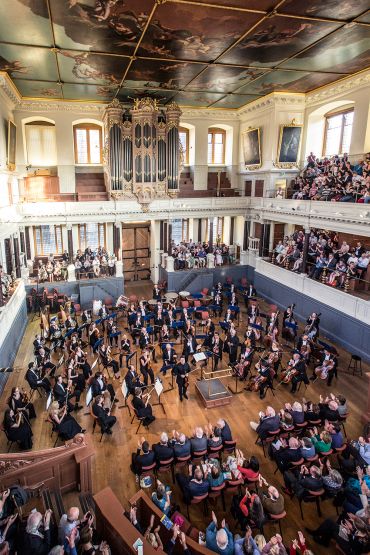 The Oxford Philharmonic Orchestra is the University’s professional symphony orchestra in residence and has been working closely with the University since 2002, although the orchestra has been going since 1998. Part of its core mission is education and community work. This ranges from taking music into areas of economic and social deprivation and introducing concert-quality music to young people who will not have had an opportunity to participate before, to encouraging the most talented musicians in the county to develop their skills through tuition and masterclasses via the University and the Oxfordshire Music Service. For many this is a valuable opportunity to play alongside professional musicians.
The Oxford Philharmonic Orchestra is the University’s professional symphony orchestra in residence and has been working closely with the University since 2002, although the orchestra has been going since 1998. Part of its core mission is education and community work. This ranges from taking music into areas of economic and social deprivation and introducing concert-quality music to young people who will not have had an opportunity to participate before, to encouraging the most talented musicians in the county to develop their skills through tuition and masterclasses via the University and the Oxfordshire Music Service. For many this is a valuable opportunity to play alongside professional musicians.
Their work in schools is concentrated on special schools, such as the Mulberry Bush School and Northern House School where the children are severely emotionally and educationally challenged.
Teachers and carers always comment on the tremendous benefit that the children derive from participating in workshops led by these musicians who are trained and experienced in this demanding, specialist work. They also work with many local primary schools in the Oxford estates. They have enjoyed a relationship over many years with the Pegasus School on the Blackbird Leys estate.
Hospitals are another area where the Oxford Philharmonic Orchestra has established a regular presence. In order to ensure continuity and a close relationship, they concentrate their activities on a small number of units. They have been at the Centre for Enablement at the Nuffield Orthopaedic Centre, a unit that caters for clients who have severe physical conditions. They also work regularly with patients who have age-related conditions at the Fulbrook Centre, and at the City Community Hospital of the Oxford Health NHS Foundation Trust.
To find out more go to: www.music.ox.ac.uk/events